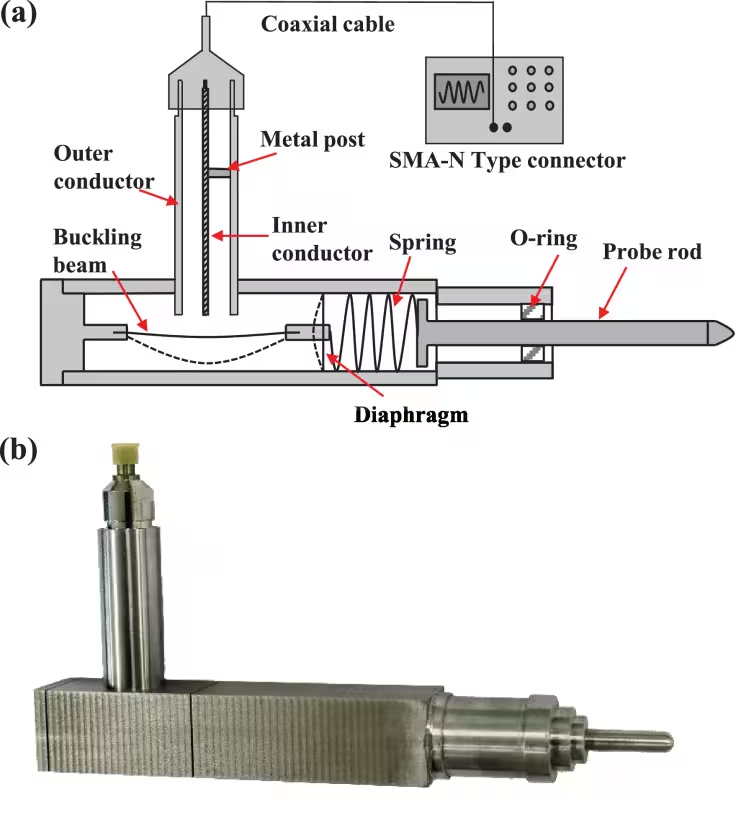Displacement Sensitivity and Range Enhancement Through Buckled Beam-Assisted OE-HCCR
Displacement measurement sensitivity is essential for structural health monitoring, equipment control, and smart manufacturing applications. Various techniques like inductive, capacitive, and photonic are being studied for highly sensitive displacement measurements. Optical fiber displacement sensors are popular due to their immunity to electromagnetic (EM) interference, but they need high maintenance and expensive components.
Coaxial cables-based sensors, like coaxial cable Bragg grating ((CCBG) and coaxial cable Fabry-Perot interferometer (CCFPI), which transmit electromagnetic waves over long distances, offer a promising solution to these challenges. However, sensing performance is limited by the long wavelength of probing microwave signals.
The paper proposes a novel microwave displacement sensor based on an open-ended hollow coaxial cable resonator (OE-HCCR) with a buckled beam structure. The sensor combines a probe rod, spring, diaphragm, and buckled beams, enhancing its displacement sensitivity. It is simple in design, robust, and has a wide range of measurements, making it excellent for the construction industry and smart manufacturing.
The sensor comprises a microwave resonator and a buckled beam structure fabricated on a hollow coaxial cable. The buckled beam structure consists of a rectangular cross-section, a diaphragm, and a probe rod attached to the diaphragm. The sensor body is made of stainless steel and has a water-resistant inner structure.
The OE-HCCR is constructed with a metal post, short-circuiting the inner and outer conductor of the coaxial cable and an open end. The short and open ends act as first and second reflectors, respectively. The resonant frequency variation is strongly related to the change in the reflection coefficient of the open end. When an axial displacement is applied, a compressed spring leads to diaphragm deformation, which is mechanically transferred and amplified to a vertical displacement at the center of the buckled beam. This results in an air gap distance (d) between the buckled beam and coaxial cable open end, leading to resonant frequency variation, further calibrated with the displacement to obtain the sensor characteristics. The relationship between displacement and resonant frequency is relatively linear, with a sensitivity of 0.816 MHz/mm.
A vector network analyzer is used to note down the variation in resonance frequency with variation in distance by measuring the reflection coefficients. Further, the amplification due to the buckled beam is quantified by the simulation study using Abaqus.
The effect of temperature on the sensor was studied by placing it in a temperature-controlled chamber with a measurement accuracy of 0.1 ◦C. Microwave signals were captured when the temperature varied from −20 ◦C to 60 ◦C with a step of 10 ◦C. The temperature-induced displacement variation was only 0.08 mm, showing minimal temperature crosstalk.
The proposed buckled beam embedded within the OE-HCCR architecture, the microwave resonator-based displacement sensor, shows a high sensitivity of 0.8175 MHz/mm and low-temperature crosstalk of 0.0014 mm/◦C.
The proposed displacement sensor can be considered an excellent candidate for applications in the construction industry and intelligent manufacturing with its advantages of high displacement sensitivity and wide range, low-temperature cross-sensitivity, and enhanced robustness.




